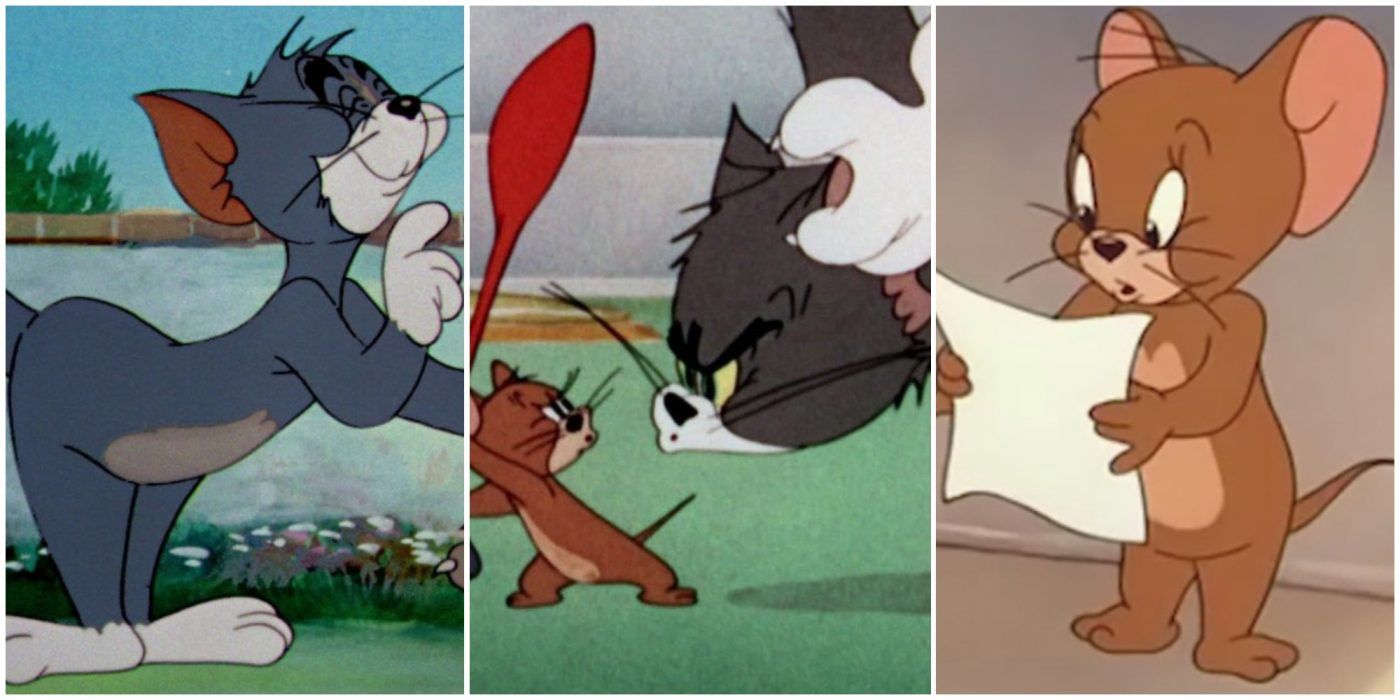

African-American housemaid, Mammy Two Shoes catches Tom acting against her orders. Mammy Two Shoes: first appearance in the first short "Puss Gets the Boot", February 10, 1940.
#Tom and jerry episodes cartoon series
Grey and white domestic shorthair Tuxedo cat, one of the two main protagonists of the series along with Jerry. Tom: named Jasper in the first official announcement (see below), named Jasper also in the first short, named Tom (full name Thomas) since second short first appearance in the first short "Puss Gets the Boot", February 10, 1940. Small brown house mouse, one of the two main protagonists of the series along with Tom. Jerry: named Pee-Wee in the first official announcement (see below), named Jinx in the first short (but not referred to in name on-screen), named Jerry since second short first appearance in the first short "Puss Gets the Boot", February 10, 1940. Snowbody Loves Me has a selection of Chopin’s repertoire, namely the Revolutionary Etude, the Grande Valse Brillante end the Fantaisie Impromptu.Main characters (in order of appearance): The episode ends with Jerry in a Swiss doll attire dancing to Tom’s piano melody. Tom almost succeeds in getting rid of the mouse for good by dropping him outside in the snow, but then is overcome with guilt and revives an almost frozen jerry with Schnapps. While out on the Swiss Alps, Jerry is caught up in a snowball and rolls his way to a cheese shop where, of course, Tom is placidly resting until the rodent decides to interrupt his quiet and starts diving in and out of wedges of Emmenthaler cheese. Instead of singing her famous arias, however, Carmen screams in disgust.
#Tom and jerry episodes cartoon full
Jerry, however, is swifter than his feline frenemy and later in the episode, we see him in full Escamillo attire. So, by pretending to be a virtuoso, Tom can resume his hunt. In the end, however, the case reveals to contain nothing but a violin that is actually a record player. While Jerry manages to enter the opera house without much ado, Tom has to disguise himself as a member of the orchestra and, eventually, manages to reach the orchestra booth by carrying what at first glance, was a contrabass. In this chase, they arrive at the Metropolitan Opera, where Bizet’s Carmen is about to be performed. Tom is chasing Jerry in the crowded streets of New York City. Chopin’s Grande Valse Brillante serenades Tom’s discovery with a “Vivo” tempo. At some point, however, the cat accidentally devises a pair of wings out of a torn corset, which enables him to fly. The bird and the mouse repeatedly save each other from Tom’s bloodthirsty rage, eventually plotting against him.

Needless to say, Jerry happens to spot the action while walking outside his lair and preparing for a new day. The Flying CatĪ little diversion for Tom, who, this time, sets out to capture a sleeping canary. As a consequence, Tom has to play each instrument to save performance. That truce, however, is shortlived, and first Jerry manages to attach wheels to the podium, which causes Tom to be run over by a bus, and then makes all players disappear. The two, however, experience some sort of (apparent) bonding when the waltz section approaches. Of course, Jerry chimes in climbs onto the podium and tries first to conduct alongside Tom, then to steal the scene. This time around, Tom is no longer a Virtuoso pianist, but, instead, he wields a baton, conducting the Fledermaus overture. Throughout the episode, we hear several references to the Barber of Seville’s score, perhaps because all three characters fancy themselves as smart and enterprising as Figaro. Kitty FoiledĪ cozy at-home episode has Tom violently chase Jerry and devise all kinds of plans to get rid of him, but a caged canary comes to the mouse’s aid, helping him plot against Tom. The Classical music community can feel for poor Tom: the piece presents a plethora of technical challenges and, by the end of the 19th century, it had become the unofficial gold standard through which each pianist could prove his or her prowess. 2: A frac-clad Tom is solemnly playing the piano that, of course, the insufferable Jerry had turned into his temporary home. In this 1947 episode, we can hear Franz Liszt’s Hungarian Rhapsody no. Liszt, Chopin, and Strauss prove to be quite fitting to the characters’ actions. However, we can’t do anything but appreciate the work of musical director Scott Bradley, who infused the straightforward plot with complex scores combining jazz, classical and pop music. We all have childhood memories related to Tom and Jerry and the slapstick humor surrounding their odd relationship, even though, if you watch them as an adult, you may notice some controversial sequences involving characters in blackface, cannibalism and bizarre acts of violence (axes, anvils, teeth getting hammered or body parts getting sizzled).


 0 kommentar(er)
0 kommentar(er)
